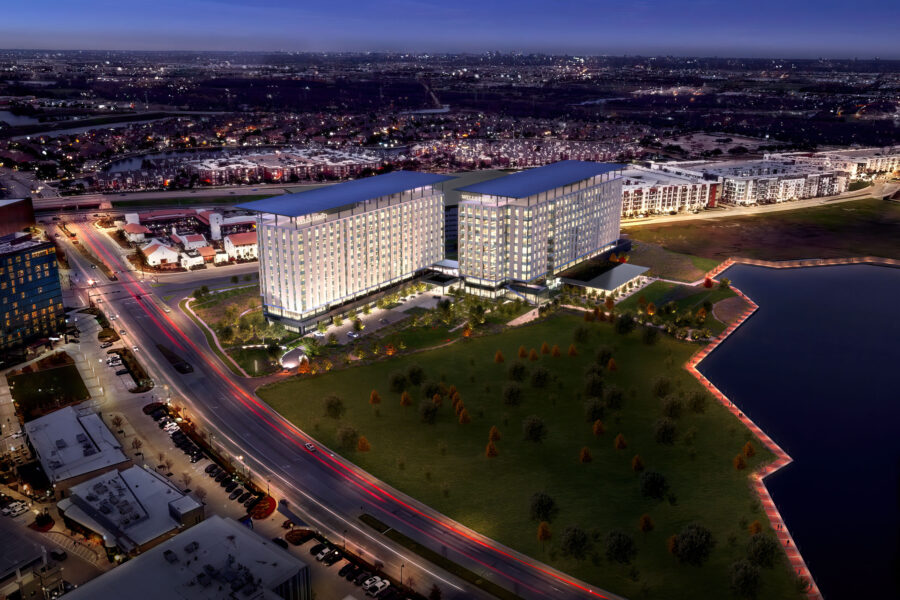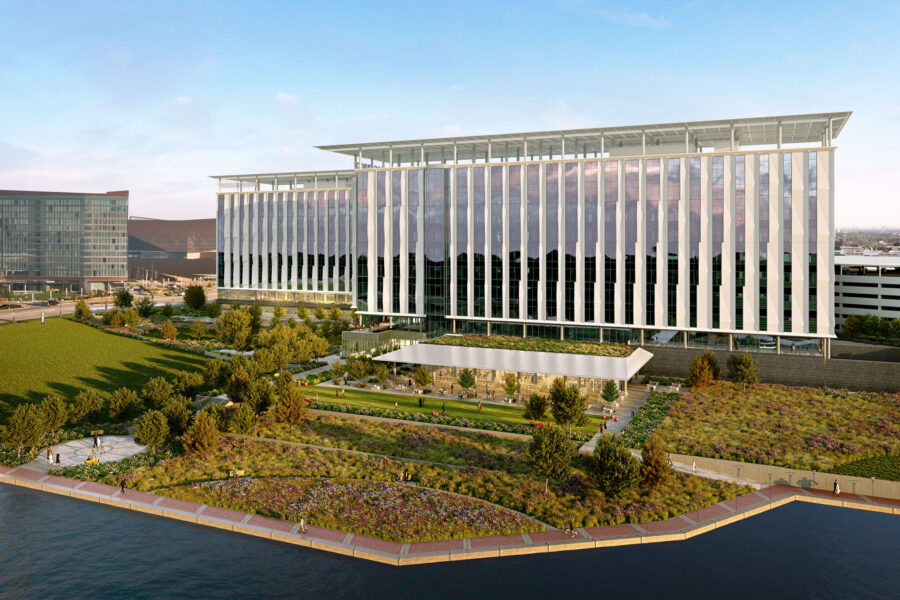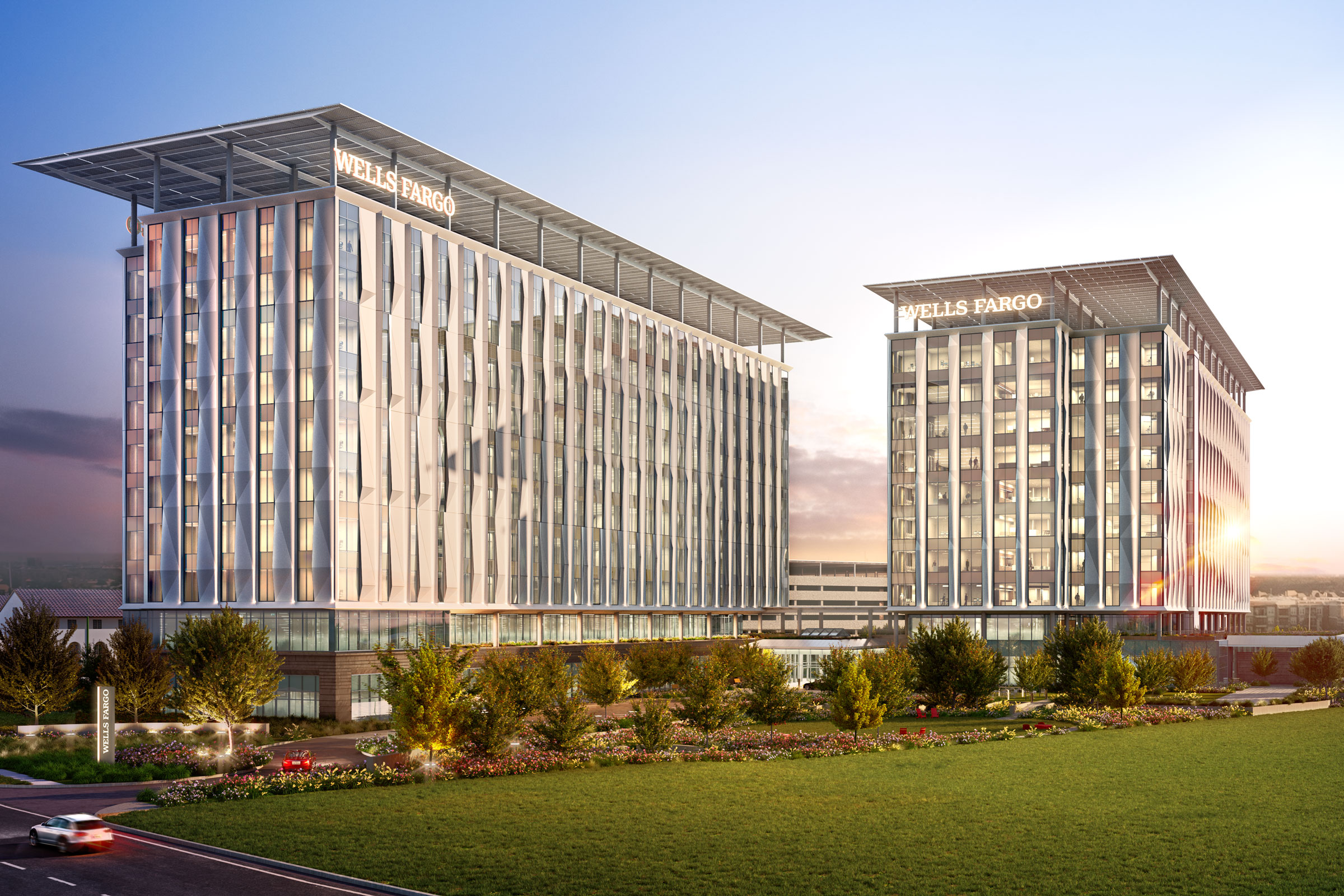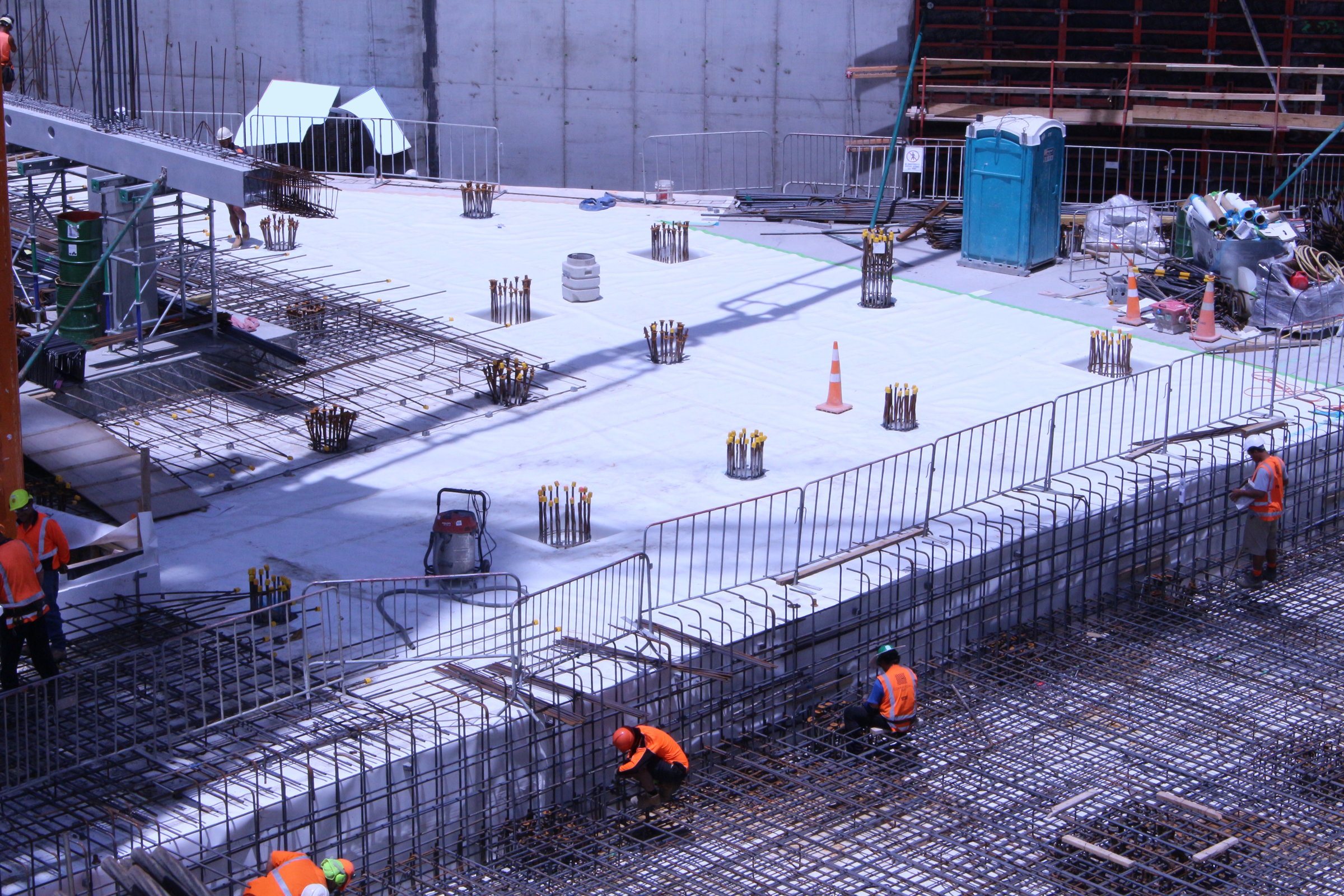Story at a glance:
- Designed by Corgan, Wells Fargo’s new campus in Las Colinas, Texas produces more energy on site than it consumes. It’s the first net-positive project for both the client and the architecture firm.
- The project started with an initial goal of net zero, but when the client moved the target, 0the design team had to scrutinize every system to reach net positive.
- Corgan’s commercial sector leader Matt McDonald shares why financial institutions are making big sustainable building moves.
Workspaces designed around wellness and sustainability are important for attracting top talent, says Matt McDonald, the commercial sector leader at Corgan. “If you’re a college graduate, you’re going to be looking for an organization that aligns with your priorities. You want to put your career and energy into a place that is giving back to the environment, giving back to a community, or giving back in some capacity.”
He’s noticed some financial institutions, like JPMorgan Chase’s net-zero HQ in Manhattan and Goldman Sachs’ Dallas campus, have been making a push toward sustainability in their building efforts. “Corporations these days are looking beyond being competitive and really doing the right thing. They realize they’re the entities that have the ability to influence how the real estate market happens and how commercial real estate gets developed.”
Corgan recently designed an incredibly sustainable campus for Wells Fargo in Irving, Texas that will go beyond net zero to generate more energy onsite than it consumes when it’s complete. Currently under construction, the mixed-use development will consist of two 10-story office buildings connected to a parking garage via a skybridge. The 850,000-square-foot project is targeting LEED Platinum, with special attention paid to site planning and building orientation, facade design that mitigates heat gain, solar panels, regionally sourced materials, lighting interventions, and interstitial biophilic elements throughout the space.
It’s Corgan and Wells Fargo’s first net-positive project. We recently sat down with McDonald to learn more about how they plan to achieve this inspiring project and its challenges.
What is net positive?

Designed by Corgan, Wells Fargo’s new campus in Las Colinas, Texas produces more energy onsite than it consumes. It’s the first net-positive project for both the client and the architecture firm. Rendering courtesy of Corgan
The idea of creating a net zero development or building is giving back an equal amount of the power of your consuming, so therefore your impact on the utility grid is zero.
It’s net positive when you’re generating more energy on the site than you’re using. You’re able to give that power back to the utility grid, store it, or do something else with it.
This is a very aspirational goal, and we’re thrilled on many levels to actually achieve this.
How do you achieve net positive?

As the crown of the building, the PVs are softly up-lit at night to create the illusion of a delicate floating plane—a signature mark of the project and its vision. Rendering courtesy of Corgan
You can create power onsite in a couple of ways. You’ve got hydroelectric if you’ve got a river or a dam close by. You’ve got wind potential if you’ve got the availability for that. But based on where we are and where the site is, it made the most sense to focus on solar power.
Access to sunlight and views is also important. One of the sustainability goals is to make sure you’re getting natural light deep into the building floor plates. These are really large floor plates—40,000 square feet each—but we’ve designed them to be long and narrow so you don’t have dark spots in the middle of the building.
One of the counterpoints to that is when you have too much natural light, you have some heat gain and glare that comes along with that. This is probably one of the larger installations on a corporate campus of an electrochromic glazing system on the exterior. What that does is when the sun is bearing down the glass darkens a bit so you are minimizing some of that heat gain, while still taking advantage of the views and the light without using window shades to block the view.
How has this plan evolved?
The initial goal was to be net zero. The client came back to us late in the design process and said, “Hey, we want to really bump the goal here to be net positive.” We really had to knuckle down and scrutinize every system, every plug load, every computer, taking it down to the actual number of employees who were going to be utilizing power onsite.
Wells Fargo has its own sustainability team. They’re challenging us on our energy models, our solar heat gain, and our energy usage. They’re really pushing the envelope, no pun intended, to really make sure we’re maximizing the availability of technology and really trying to stretch sustainable development.
How do you balance aesthetics and performance?

Rendering courtesy of Corgan
This is an initiative Wells Fargo is very proud of. The idea of seeing the solar panels was something they were not afraid of. The solar canopy makes that top level of the architecture usable by shading it, while also being able to showcase and make visible what we’re doing on the sustainability front.
There was a balance between the calculation of the required area and then structurally how far you can cantilever those things out at an economic rate. We did have to be very particular about how the underside of those canopies look because it will be visible from the street. It will have to be very carefully installed, and we’ll be monitoring that very carefully, but the idea of creating that as a thoughtful and very visible approach to sustainability was something that became a design element in itself.
Where does biophilia fit in?
We wanted a large parking structure because we are going to have 5,000 to 6,000 cars we have to manage on a daily basis. Putting that on a separate piece of property gave us the perfect opportunity to utilize that upper level for photovoltaic panels to harness all the energy.
That also reduced surface parking and minimized paved outdoor spaces. We could maximize the green both from an accessibility and walkability perspective but equally for views. You offset the heat island effect by utilizing more landscaping and create outdoor amenity space that is so desired.
With this site being on the waterfront, you have this tremendous outdoor amenity that will never be blocked. Not only does it help you from a sustainability perspective because you won’t have anything that’s casting shade on your building, but you’ve got these unadulterated views of this really thoughtful development that’s here in Las Colinas.
How do you see sustainable design strategy evolving?
I think there’s a lot of tried and true sustainable practices that are being tested for their maximum potential. If you think about using the sun to generate power, using the earth to do geothermal wells for heating and cooling, these are not new practices. These are timeless practices that have been done based on what the good earth has given us. We’re just learning new and innovative ways to utilize them and maximize their efficiency.



